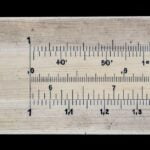“Hava Nagila!” You’ve likely heard this joyous exclamation echoing through celebrations—maybe at a wedding, a cultural festival, or even in a movie. But this isn’t just a catchy tune; it’s a song woven into the fabric of history and tradition. Let’s delve into the heart of “Hava Nagila,” exploring its simple yet powerful lyrics, its mysterious origins, and its enduring appeal as a global anthem of joy and resilience.
Unveiling the Meaning: A Song of Celebration
The beauty of “Hava Nagila” lies in its simplicity. Here’s a look at the lyrics:
| Hebrew | English Translation |
|---|---|
| Hava Nagila | Let us rejoice |
| Narima | Let us be happy |
| Nashira | Let us sing together |
“Hava Nagila” is an invitation, urging everyone to join in the celebration and embrace pure joy.
“Narima” takes it a step further, encouraging us to lift our spirits, share our happiness, and create a collective sense of delight.
“Nashira” reminds us that joy multiplies when shared. It’s a call to raise our voices together, uniting in song and spirit.
From Humble Beginnings to Global Anthem: Tracing its Roots
The origins of “Hava Nagila” are shrouded in a bit of mystery. Some believe it started as a Hassidic Nigun, a wordless melody often sung in religious gatherings. Around 1915, music scholar Abraham Zevi Idelsohn is believed to have given the tune a more defined structure, transcribing it and making it accessible to a larger audience.
From there, “Hava Nagila” blossomed. It quickly became a staple at Jewish celebrations, particularly weddings and Bar/Bat Mitzvahs, where its themes of joy, unity, and the passing down of traditions resonated deeply. But its reach didn’t stop there. This simple song transcended cultural and religious boundaries, becoming a global anthem of hope and resilience.
The magic of “Hava Nagila” lies in its universal appeal. The music itself, often played with instruments like the clarinet and accordion, is undeniably catchy and uplifting. But it’s the message embedded in the simple lyrics that truly resonates: a call to come together, celebrate life, and find joy in shared moments. Next time you hear “Hava Nagila,” let it be a reminder of the power of music to connect us. It’s a testament to how something as simple as a song can transcend borders and languages, becoming a timeless expression of human joy.
Unpacking “Hava Nagila”: More Than Just Words
“Hava Nagila” – it’s a phrase heard around the world, often accompanied by joyous dancing and celebration. But what does this often-heard phrase actually mean? In Hebrew, “Hava Nagila” translates directly to “Let us rejoice.” It’s a simple phrase, yet it carries a powerful message of joy and celebration, perfectly reflecting the happy and energetic feeling of the song itself.
When you hear “Hava Nagila,” it’s an invitation to join in the fun and be happy! This makes it incredibly fitting for Jewish celebrations like weddings and Bar/Bat Mitzvahs, where people come together to share joyous milestones. “Hava Nagila” becomes an anthem, a call for everyone to celebrate life and tradition together. It’s no wonder the song has become so iconic, representing not just a catchy tune, but also the heart of Jewish cultural identity and the strength found in community.
Is “Hava Nagila” Really a Happy Song? Exploring its Depth
We’ve talked about what “Hava Nagila” means and where it came from. But is it really all sunshine and roses? Well, it’s definitely catchy! That upbeat rhythm and those lyrics about rejoicing? They practically beg you to clap along and dance in a circle. It’s no wonder people think of parties and good times when they hear it.
But “Hava Nagila” has been around for over a century. It’s been played at weddings and Bar Mitzvahs, sure, but also during some challenging historical moments. Considering the journey of the Jewish people, the hardships they’ve faced, “Hava Nagila” takes on a new layer of meaning. It’s not just about being happy; it’s about choosing to find joy and hope despite those hardships.
The song’s popularity really took off during the Zionist movement. This was a time of immense struggle and uncertainty for the Jewish people, yet “Hava Nagila” became an anthem for them. Some experts suggest it represented the dream of a homeland, a place where they could finally be safe and free.
And the amazing thing is how “Hava Nagila” has resonated with people from all walks of life. It’s not just a Jewish song anymore; it’s a global anthem of celebration and hope. You hear it at parties, in movies, even at sporting events! It’s a song that transcends cultural and religious boundaries, reminding us that joy and resilience are universal experiences.
So, is “Hava Nagila” a happy song? Yes, but it’s also a lot more than that. It’s a song about resilience, unity, and the power of hope to help us overcome even the darkest of times. It’s a reminder that joy can be found even in the face of adversity, and that’s a message worth celebrating.
Is “Hava Nagila” Ukrainian? Unveiling a Musical Tapestry
Let’s talk about “Hava Nagila.” You know, that super catchy tune that always gets people dancing at weddings and celebrations, especially in Jewish communities! It’s become a symbol of joy and togetherness. But here’s the thing: the melody we all know and love actually has roots in Ukrainian folk music.
Think of it like this: the melody was like a beautiful tune just waiting to be discovered. Then, in 1918, a very important Jewish musician named Abraham Zevi Idelsohn came across this Ukrainian folk melody. He must have recognized its power because he decided to give it new life. He took that melody and added Hebrew lyrics that perfectly captured the spirit of joy and celebration. And boom! “Hava Nagila” was born.
This Ukrainian connection adds a fascinating twist to the story of “Hava Nagila.” It shows how music can transcend borders and cultures, bringing people together in unexpected ways. It also leads us to wonder about the stories behind other familiar tunes and the journeys they’ve taken across time and cultures.
Are you curious about the role and responsibilities of a petit juror? Discover the fascinating world of jury service and learn how you can contribute to the justice system.
Unleash the iconic symbol of carefree optimism with What Me Worry, Alfred E. Neuman. Delve into the history and significance of this beloved character, whose mischievous grin has brought laughter to generations.
- Unlocking Francis Alexander Shields’ Finance Empire: A Comprehensive Biography - July 12, 2025
- Unveiling Francis Alexander Shields: A Business Legacy - July 12, 2025
- Francis Alexander Shields’ Business Career: A Comprehensive Overview - July 12, 2025














